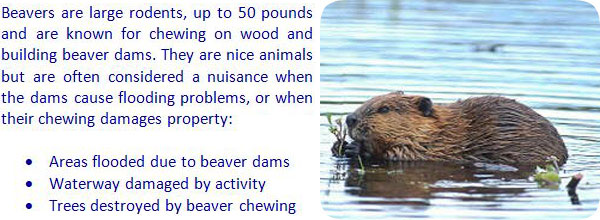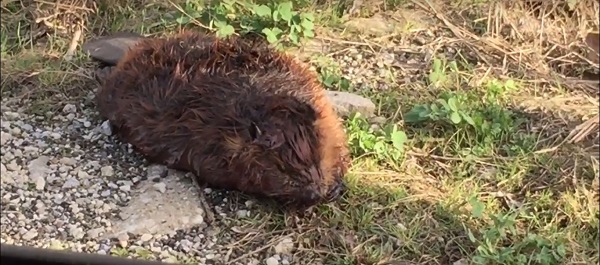 If you need beaver help, click on my Nationwide List of Beaver Removal Experts for a pro near you.
How to Kill a Beaver
If you need beaver help, click on my Nationwide List of Beaver Removal Experts for a pro near you.
How to Kill a Beaver
Beavers are some of the most innovative and clever creatures that inhabit Earth. They are incredible structural builders and live in close-knit beaver communities. Their ability to transform natural materials into a sound home in the water is unmatched by other animals.
As creatures that do not have laws of property, beavers will use what wood is most easily accessible and the highest quality. Sometimes this will be trees from human-owned property that protect the soil from eroding into the water, maintain the forest of the land or are specialty fruit trees. If this is the case, humans sometimes feel it necessary to trap and relocate beavers or if the beavers are severely disruptive it is tempting to kill the beavers all together. If this is the case for you, there are many important steps to take before you should ever resolve to kill a beaver.
 Contact officials
Contact officials
Your local Department of Fish and Wildlife officers are trained professionals to deal with this kind of conflict. They will advise you on the best practices to prevent beavers in your area, and if necessary the correct and most useful traps to be able to relocate the beavers that they will either install themselves or guide you through. Without consulting professionals you may be in for a long, frustrating experience because beavers are incredibly savvy and elusive.
Prevention
There are many prevention measures which should be employed before any other serious measures are taken.
To simply deter the beavers from gnawing on your trees, place chicken wire or other indestructible (but temporary) fencing around the trees about three feet high. This will force the beavers to choose other trees and relocate to another area. Once the beavers have relocated, you can remove the chicken wire or alternative fencing without the fear of more gnawing.
Thiram is a repellant that you can apply directly onto vegetation in your yard. Thiram is most effective if there are other trees nearby that the beaver can use. If there are no other trees, they will still go for your trees, even though they might smell and taste terrible to them.
To prevent flooding without removing the beaver dam, connect two plastic pipes and make holes in one end. Place the drain pipe through the middle of the dam with the holed-side where more water should go.
To make sure beavers do not construct dams in your water culverts, place mesh fencing in a cylinder around the culvert, propping it with vertical metal stakes.
Trapping
There are a variety of land and water traps for beavers. A body clamp is the most effective tool—which involves a network of springs and wire jaws. There are also safety clamps on each trap to make sure you do not trap yourself. Many trappers carry a hacksaw with them in case of this accident. Set the trap in the water, hung by a large pole moving horizontally over the water. The trap will hang just below the surface for the beaver to swim through. Body grips can also be set in front of beaver dens, dams or on the water’s edge.
After releasing the beaver in another location, make sure to destroy the dam or a new set of beavers will come along.
Kill without trapping
Most people who end up killing beavers while they are still roaming use a high caliber gun, for instance a .22 shot gun or rifle. Beavers are most active at dusk or dawn and best shot when they are out of the water. Using a small caliber gun or shooting a beaver while it is in the water will just end up in a slow dying, suffering beaver.
Legality
Land owners can shoot beavers without a license only on their land and on other land with legal permission. It is illegal to shoot most firearms near water because of the very potential threat of the bullet ricocheting back from a tree or rock in hidden in the water.
Before you take any extreme measures against beavers, it is important to remember they are some of the most amazing land and water creatures on earth. Their brain and building power are immense—making them majestic both on land and water. They also are natural prey for many larger animals, including wolves, coyotes, bears and other large meat eating animals. Killing beavers in your area may decrease the beaver population but upset the natural ecosystem. This unbalance may lead to hungry wolves and bears—much larger and dangerous than a beavers when in survival mode—wandering to your land and other human inhabited spaces in search of food.
The easiest and best tactic is to immediate contact your local Wild Life Department when you feel the problem has gotten out of hand. They will be able to best guide you through the most effective methods of relocating the beavers.